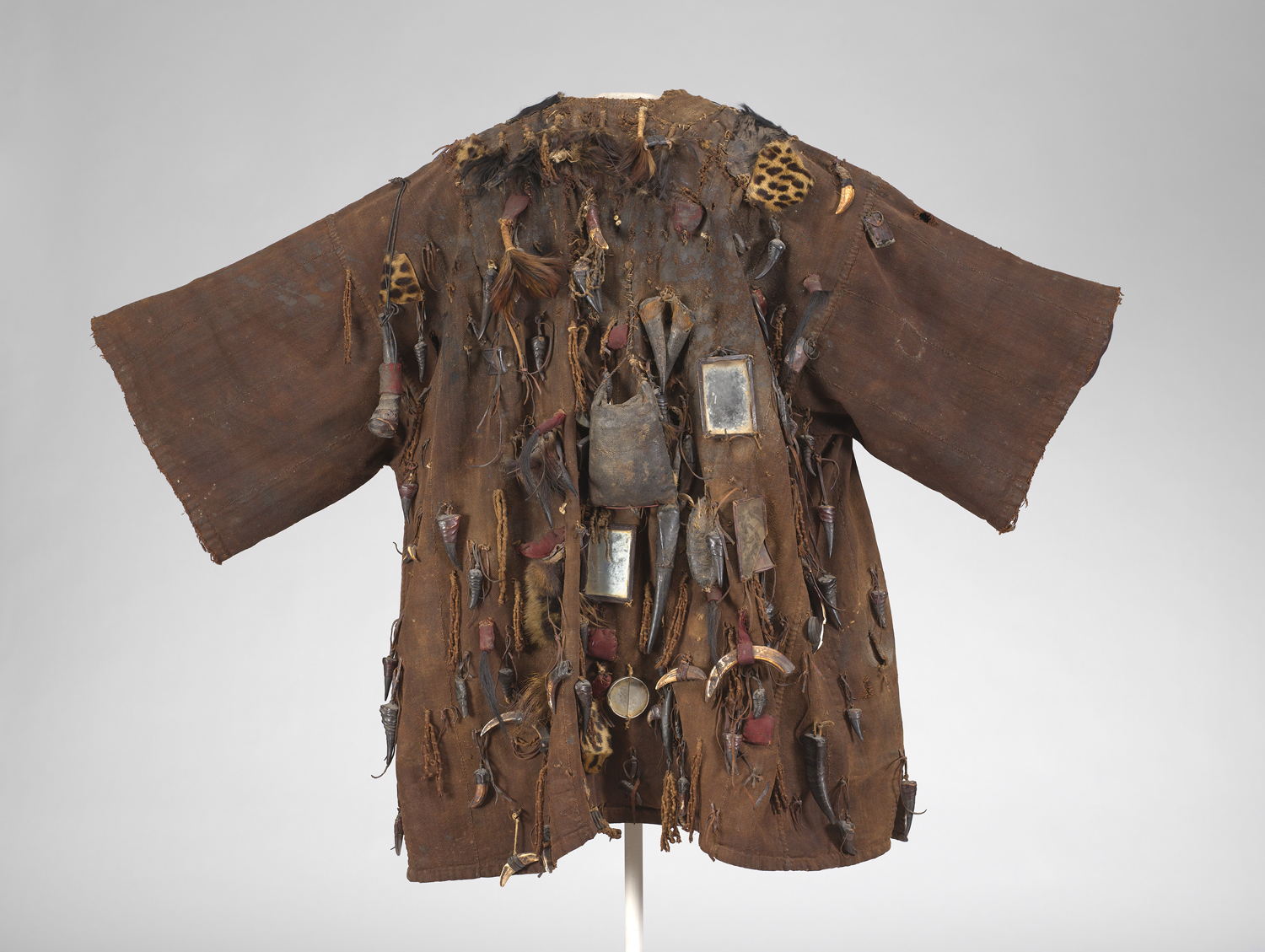
- Type: Classroom Activity
- Collection: African Art
- Culture/Region: Africa
- Subject Area: History and Social Science, Visual Arts
- Grade Level: K-5
Object Information
The Bamana (bah-mah’-nah) people, one of many ethnic groups in Mali, are an African farming and hunting culture living on the western edge of the Sahara Desert. Tunics such as this Hunter’s Shirt traditionally play an important part in rituals and ceremonies occurring before a hunt. These activities, which often take place at the boundary between village and wilderness, prepare hunters to go into the world of dangerous animals and spirits. The hunters call on supernatural energies to assure safety and success. This Hunter’s Shirt is made of white cotton strips that were sewn together and then dyed with bark. The cloth is decorated with charms that are believed to have special powers. Animal teeth, claws, horns, and fur, considered good-luck charms, are attached to the hunter’s shirt along with secret pouches called basi. The Bamana people believe that if the basi are opened, the charms inside lose their power to ward off evil and bring good fortune to the wearer. Although hunting is a disappearing practice in most of Africa, these tunics are still worn during festivals, processions, and other gatherings as symbols of success.
Concept
Students will be introduced to Mali’s ancient and contemporary practices by studying the Hunter’s Shirt of the Bamana culture. They will explore geography, trade, natural resources, and cultural traditions.
Map
Have students view a detailed map of Africa and locate present-day Mali, the Niger River, and the Sahara Desert. Ancient Mali was much larger and included parts of seven current countries. It was located between the salt mines of the northern desert and the gold mines to the south. Salt was so important for preservation of food and the health of both people and livestock that it was traded pound for pound with gold. Students will discuss the importance of these trade items as well as iron, copper, ivory, pepper, and fabrics.